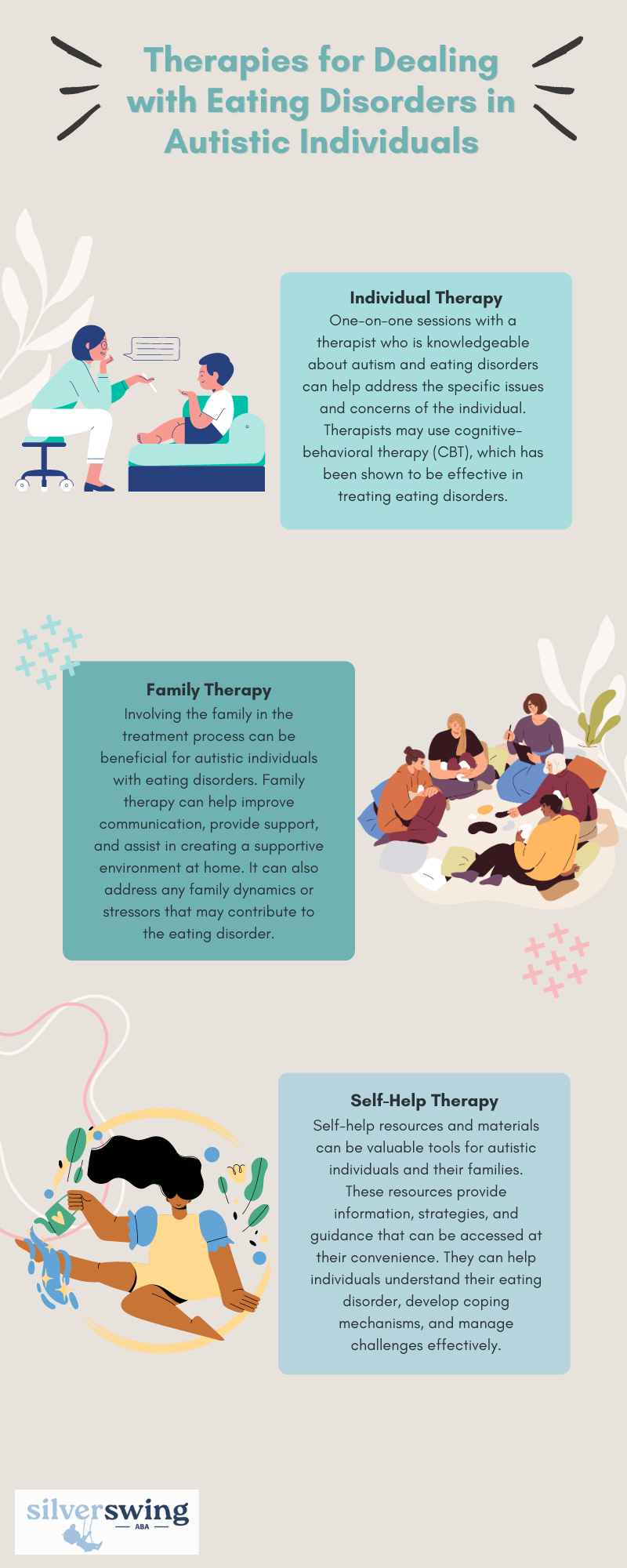Eating disorders can affect individuals from various backgrounds and demographics, including those on the autism spectrum. Understanding the link between autism and eating disorders is crucial for recognizing and addressing these challenges.
Additionally, it is important to explore the prevalence of eating disorders specifically in autistic individuals.
Research suggests that autistic individuals may be more likely to experience eating disorders compared to the general population. Studies indicate that between 4% to 23% of individuals with an eating disorder are also autistic, with anorexia being reported to be the most common.
It is worth noting that autistic people diagnosed with anorexia are more likely to have sensory issues around food rather than being motivated by body image concerns. This distinction highlights the importance of considering the unique factors that contribute to the development and manifestation of eating disorders in autistic individuals.

Prevalence of Eating Disorders in Autistic Individuals
The prevalence of eating disorders among autistic individuals is significant. Up to 50% of adults with anorexia are autistic or have elevated autistic traits. In fact, research suggests that 20-30% of people with anorexia are either autistic or have elevated autistic traits.
These findings highlight the higher rates of anorexia in the autistic population compared to non-autistic individuals.
The challenges faced by autistic individuals in relation to eating disorders can be multifaceted. Sensory issues around food, such as highly selective eating requirements or sensitivity to textures, appearance, smell, or sound of foods, can contribute to food aversions and difficulties in maintaining a varied diet.
Additionally, autistic individuals may face challenges related to the social aspects of eating and physical difficulties, such as oral or gastrointestinal problems.

Challenges in Identifying Eating Disorders
Identifying eating disorders in individuals with autism can be complex due to overlapping characteristics and unique factors specific to autistic individuals.
The characteristics of eating disorders can sometimes overlap with traits commonly associated with autism. For example, routines and difficulties with socializing are common in individuals with autism, but they can also be mistaken for signs of an eating disorder.
This overlap can make it challenging to differentiate between the two and may delay the identification and appropriate treatment of eating disorders in autistic individuals.
Additionally, eating challenges are not uncommon in individuals with autism. Sensory sensitivities, such as being sensitive to textures, appearances, smells, or sounds of foods, can contribute to food aversions. These challenges in eating can be misconstrued as signs of an eating disorder when, in fact, they may be related to the sensory aspects of autism.
Unique Factors in Autistic Individuals
Autistic individuals may face unique factors that contribute to the development or manifestation of eating disorders. Selective eating requirements and sensory sensitivities can significantly impact an individual’s relationship with food. Autistic individuals may have highly specific preferences or aversions to certain foods due to sensory issues.
Difficulties with the social aspects of eating, such as sharing meals or eating in public, can also contribute to challenges surrounding food and potentially lead to disordered eating behaviors.
It is essential for healthcare professionals to consider the complexities and unique factors when identifying and treating eating disorders in autistic individuals. Taking a holistic approach that accounts for the specific needs and challenges of the individual can lead to more accurate diagnoses and effective treatment plans.

How to Deal with Eating Disorders in Autistic Individuals
In order to treat eating disorders in autistic individuals, a tailored approach is essential. While there are no national guidelines specifically for treating eating disorders in autistic people, it is recommended that therapies and treatments be delivered by professionals with a good understanding of autism.
Tailored Therapies
Treating eating disorders in autistic individuals requires therapies that address the unique needs and challenges they face. The National Institute for Health and Care Excellence (NICE) recommends that individuals with eating disorders, including autistic individuals, should have access to psychological therapies specialized in treating eating disorders. These therapies can include:

Importance of Understanding Autism
Understanding autism is crucial in the treatment of eating disorders in autistic individuals. Without tailored support, autistic people experience worse eating disorder outcomes compared to non-autistic individuals.
Unfortunately, eating disorder services often fail to meet the needs of autistic patients, leading to significant challenges in providing effective support.
By understanding the sensory differences, routines, and structures that are integral to autism, healthcare professionals can adapt treatment approaches to better suit autistic individuals. This includes considering the sensory aspects of food, individual preferences, and challenges related to social aspects of eating.
It is also important to address any physical difficulties, such as oral or gastrointestinal problems, that may contribute to the eating disorder.
Tailored treatment approaches that consider the unique characteristics and needs of autistic individuals can lead to more effective interventions and improved outcomes. Collaboration between professionals with expertise in both eating disorders and autism can provide comprehensive support and ensure that treatment is adapted to meet the specific requirements of autistic individuals.




